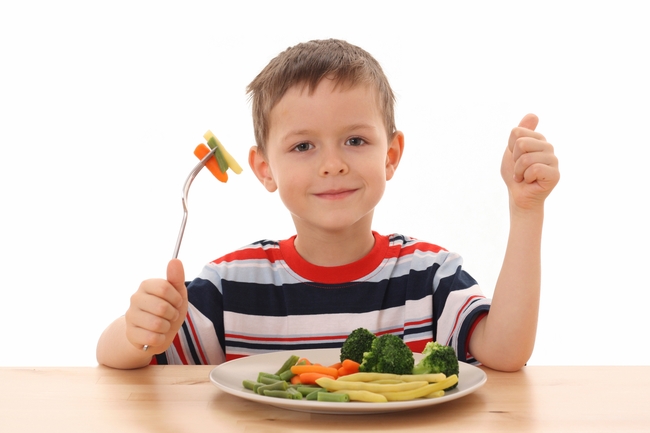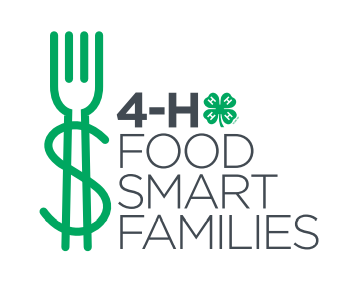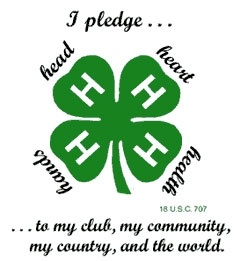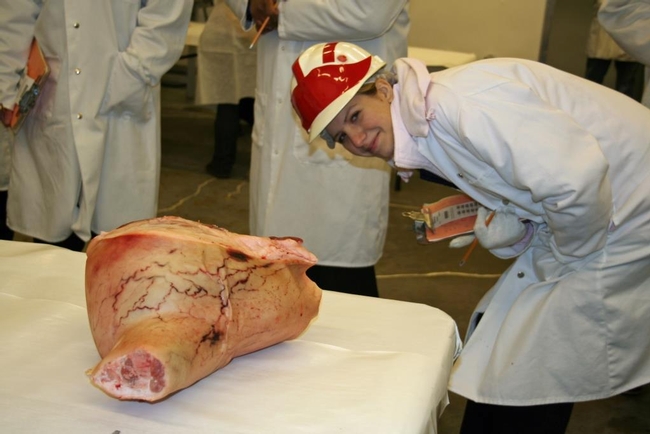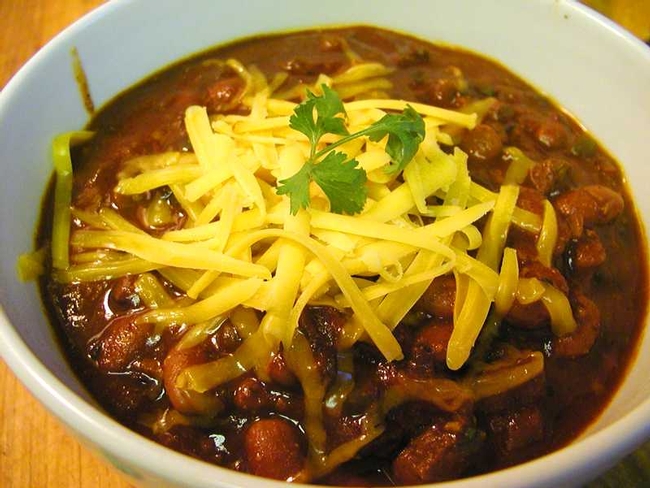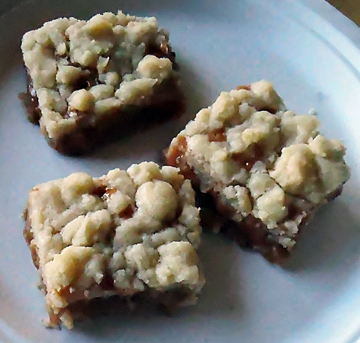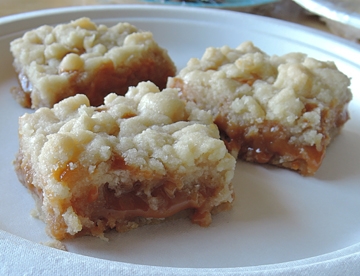Posts Tagged: 4-H
Empowering California youth through food smart families
We are what we eat. Unfortunately, we don't always make the best food choices. Sometimes it's simply a lack of will power. In communities struggling with high poverty rates, it's often the result of low incomes and limited food options. Dangerously high obesity rates, especially among youth, are a major public health concern in the United States.
The health of California youth reflects this disturbing national trend. To address the challenge of childhood obesity statewide, the California 4-H Food Smart Families program will be implemented at four sites in Fresno, Orange, Sutter-Yuba and Tulare counties this year. Additional UC partners will include the Expanded Food and Nutrition Education Program (EFNEP) and CalFresh.
Youth need to increase consumption of dark green veggies and whole grains, and decrease intake of sugar and saturated fats. The objective of California 4-H Food Smart Families is to increase knowledge and create behavior change related to nutrition, cooking, gardening, physical activity and food preparation. The program engages youth 8 to 12 years old and teens in 4-H Healthy Living programming. Youth will be directly reached through lessons delivered at after-school sites, low-resource elementary schools and organized field days at four UC Agriculture and Natural Resources Research and Extension Centers (REC): Kearney REC in Parlier, South Coast REC in Irvine, Sierra Foothill REC in Browns Valley and Lindcove REC in Exeter. The program is structured around positive youth development curricula and practices which provide an intensive engagement of underserved children, teens, families and other stakeholders. Local 4-H teens will be recruited and trained to deliver programs and assume leadership roles.
The National 4-H Council partnered with the ConAgra Food Foundation to launch the national 4-H Food Smart Families program in 2014. ConAgra sponsored funding to award grants to five states for program implementation. This year, in addition to the original five states, California and Louisiana were awarded grants as new participants. Inclusion of the UC Research and Extension Centers in the California program is a new model that organizers hope will be replicated elsewhere. Youth and families who visit the centers will witness first-hand not only how food is grown, but also the science behind it. Center specific lessons may be added to highlight the unique nature of local agriculture and natural resources and the food crops cultivated and studied at each center.
Programming at California sites will get underway this fall and will continue through the school year. Look for more exciting California 4-H Food Smart Families news in the coming months as programming and activities kick into high gear.
Author: Roberta Barton
Monkey bread: It's more fun than a barrel of....
The skills learned in the UC Agriculture and Natural Resources 4-H Youth Development program last a lifetime, but in the case of a really good, quick-and-easy recipe for Monkey Bread, the skills last but the bread doesn't.
Okay, who ate the last piece? Umm, when will you be making more?
Maya Farris, 9, a second-year 4-H'er, may be fairly new to 4-H but she knows how to make a good batch of “Monkey Bread.” A member of the Pleasants Valley 4-H Club in Vacaville, she won a showmanship award at the Solano County 4-H Project Skills Day with her “Monkey Bread” entry and then went on to enter the project—and wow the judges—at the Solano County 4-H Presentation Day.
We watched folks line-up for a sample of her monkey bread at Project Skills Day, and then watched her expertly answer questions from judges at the Presentation Day.
Before we give you the recipe, first, a little bit about Maya. She's one busy 4-H'er. Her current projects are baking and bread making, arts and crafts, rabbits, poultry, goats and crocheting. She learned how to make monkey bread from her baking and breadmaking project. She thoroughly enjoyed the recipe, as did her family and friends.
The Farris family is sold on 4-H. “4-H has really helped Maya become focused and experience different activities that she may not have otherwise tried,” mother Rayita said. “4-H is definitely a family affair; her older sister is also involved in 4-H and in many projects.”
The monkey bread recipe is a five-ingredient recipe, perfect for busy days:
Monkey Bread Recipe
Prepared by Maya Farris,
Pleasants Valley 4-H Club, Vacaville
1 can refrigerated biscuits (16.3 oz)
1/4 cup sugar
1/2 teaspoon cinnamon
1/3 cup brown sugar
1/4 cup melted butter
Mix sugar and cinnamon in a large ziplock bag and set aside. Cut each biscuit into quarters and place in zip lock bag, a few at a time. Shake to coat and place pieces in a greased 8" loaf pan. Combine melted butter and brown sugar and pour over the coated biscuit pieces. Bake at 350 degrees for 40 minutes or until golden brown. Let cool 5 minutes, then turn over onto a serving plate. Serve warm.
Meanwhile, what do you know about monkey bread? Actor Robert Duvall couldn't get enough of it. Kids grab it and pull it apart like toys after Christmas. Nancy Reagan served it in the White House. Texan Anne King created a legend.
One of my Texas relatives gifted me with Tom Perini's Texas Cowboy Cooking cookbook which includes Anne King's famous Monkey Bread recipe. Robert Duvall wrote the foreword to the book after enjoying Tom Perini's cooking in between scenes of the Warner Brothers' 1995 movie, “Stars Fell on Henrietta.”
Duvall starred as a destitute wildcat oilman who lands in the town of Henrietta, Texas, during the Depression. Duvall thinks there's oil — aka black gold, Texas tea — on a poor cotton grower's farm. He convinces the farmer to go for broke. Director James Keach filmed the Clint Eastwood-produced movie near Buffalo Gap, Texas, which just happened to be near the Perini Ranch Restaurant.
“After Clint Eastwood and I ate our first meal there, the cast and crew returned for dinner as often as we could,” Duvall writes in the foreword. Guess you could say they took a'likin' to the restaurant. They loved the “good eats,” including Monkey Bread.
Anne King of Albany, Texas, rose to fame (maybe not fortune) with Monkey Bread and shipped it all over the country. It's also called a pull-apart bread or bubble bread because of the layers of dough squares or rolled balls baked together in a tube or bundt pan.
No one really knows how “monkey” became part of the name. Maybe someone was just monkeying around or figured the bread resembled the monkey puzzle tree. Then again, there's a fruit called “monkey bread” from the baobab tree or monkey bread tree. Nancy Reagan helped popularize the odd-sounding bread in the 1980s when she served it in the White House.
Here's Anne King's famous Monkey Bread recipe from Tom Perini's Texas Cowboy Cooking book.
Monkey Bread
By Anne King
1 cup scalded milk
1/2 cup vegetable shortening
1 cup mashed potatoes
1 teaspoon salt
1/2 cup sugar
One 1-ounce cake of yeast or 1-1/2 packets of dry yeast
1/2 cup warm water
3 eggs, beaten
6 cups flour
1/2 cup butter
Mix together the hot milk and shortening. Add the potatoes, salt and sugar. Set aside to cool to lukewarm. Dissolve the yeast in the water, and add to the potato mixture. Add the beaten eggs. Add 5 cups of the flour, 1 cup at a time, mixing well after each addition. Turn out the dough onto a floured board. Sprinkle the dough with 1/3 cup flour. Knead the dough thoroughly, adding a little more flour if the dough is sticky. Place in a greased bowl, cover and let rise for 2 hours.
Melt the butter in a shallow bowl. Roll out the dough on a floured board into a rectangular shape to a thickness of about 1/2-inch. Cut into 2-inch squares. Dip the squares into the melted butter and arrange in the bottom of a tube pan (bundt cake pan). The squares should overlap slightly. Continue to add layers until the dough is used up. Set aside to rise again until double in size, about an hour. Bake at 400 degrees for 25 minutes. Loosen the sides of the monkey bread rings with a table knife. Turn out the monkey bread and let guests pull apart the squares to serve themselves. You may bake in smaller pans, just be sure to reduce the cooking time slightly, maybe 15 to 20 minutes. Makes 1 large loaf.
Texas Cooking (www.texascooking.com) offers a version of Monkey Bread with cinnamon. It's shaped into balls instead of squares and is made with cinnamon and pecans. This bread can be mixed in the traditional manner, by hand, or in the dough cycle of your bread machine.
Monkey Bread
Texas Cooking
2-1/4 teaspoons (1 package) active dry yeast
4 cups white flour, plus more for kneading if needed
1 teaspoon salt
1 tablespoon sugar
1 cup warm milk
3/4 cup warm water
3 tablespoons melted butter, divided
1 egg, at room temperature, lightly beaten
1 cup toasted pecans, finely chopped (see Note, below)
2 teaspoons ground cinnamon
2/3 cup light brown sugar
5 tablespoons butter, melted
Lightly grease a 10-inch tube, 9-inch springform or Bundt pan. In a large bowl, combine the yeast, flour, salt and sugar, making a well in the center. In a separate container, stir together the milk, water, 2 tablespoons melted butter and egg. Add the milk mixture to the flour mixture, and stir together to form a soft dough. Turn out onto a lightly floured surface and knead for about 10 minutes, until dough is smooth and elastic. Place dough in a bowl that has been lightly sprayed with vegetable cooking spray. Brush dough with remaining 1 tablespoon melted butter, and cover with waxed paper or plastic wrap.
Let rise in a warm place for 45 to 60 minutes, or until doubled in size. While bread is rising, mix together the toasted pecans, cinnamon and brown sugar. Turn out the dough onto a lightly floured surface and knead gently for two minutes. Divide dough into 30 equal pieces. Shape pieces into balls. Dip each ball into the melted butter, then roll in the pecan mixture. Place in prepared pan. Do not pack pieces together, but leave some space between the dough pieces. Sprinkle any remaining pecan mixture and melted butter over the dough pieces. Cover with waxed paper or plastic wrap and let rise in a warm place for about 45 minutes. Bake in a 375 degree preheated oven for 35 to 40 minutes. Bread should rise well above the top of the pan and be golden brown. Cool on wire rack.
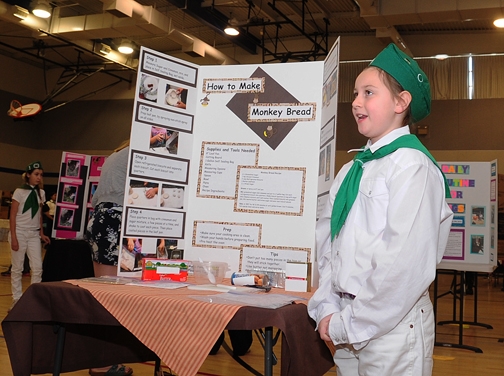
Second-year 4-H'er Maya Farris, 9, of Vacaville, answers questions about her monkey bread display at the Solano County 4-H Presentation Day. (Photo by Kathy Keatley Garvey)
Future looks bright at UC Ag Field Day
More than 3,500 FFA and 4-H high school students from California and surrounding states will gather on March 6 and 7 at UC Davis for the annual Agricultural and Environmental Sciences Field Day. The smart, passionate youth will compete in two dozen agriculture contests, from livestock judging, to agricultural mechanics, to floriculture, to computer applications, and more.
FFA (formerly known as Future Farmers of America) and 4-H are youth development programs that help prepare young people for careers in the rapidly changing world of agriculture. 4-H, which is offered in California by UC Agriculture and Natural Resources Cooperative Extension, allows members to choose from projects in science, engineering, technology, animal science education, nutrition, healthy living and many other experiential learning activities.
Each year the young competitors spend countless hours preparing for the field day, the largest of its kind in the state.
“Competing in Ag Field Day instilled in me the importance of a strong work ethic, the value of research, and the benefits of scientific methods for solving real-world problems in agriculture,” said Yousef Buzayan, a 2011 Ag Field Day participant now double-majoring in Managerial Economics and International Agricultural Development at UC Davis.
Ag Field Day is run and managed completely by UC Davis students who gain valuable experience in leadership, communication, and teamwork.
“Of all my experiences at UC Davis, managing Ag Field Day was definitely the biggest challenge, and with it came the biggest rewards,” said Mary Kimball, executive director of the Center for Land-Based Learning in Winters, California, who helped organize Ag Field Day as a student in 1992. “I learned how to manage many moving parts, and I learned that the best way to get things done well is to do it as a team.”
So if you're in Davis and see thousands of high school students on campus, you'll know who they are: tomorrow's leaders striving and thriving in Ag Field Day competitions. The future of agriculture is in good hands.?
A souper bowl of chili
If it's Super Bowl time (and it is on Sunday, Feb. 1, when the Seattle Seahawks and the New England Patriots clash for the National Football League championship), it's also time for a "Souper Bowl."
A souper bowl of chili, that is.
Question is, which recipe to prepare? Well, the Solano County 4-H Youth Development Program to the rescue.
Every year the Solano County 4-H Project Skills Day includes a Solano County 4-H Chili Cookoff. Teams sign up, prepare their chili in advance, and transport it in a crockpot or slow cooker to the venue (this year it was the C. A. Jacobs Middle School in Dixon). They field questions from the judges, who sample it, score it and select the winning team.
This year's winner was a pepper-loving team that used four different kinds of peppers and the secret ingredient — love.
The group, all members of the Dixon Ridge 4-H Club and enrolled in the countywide Outdoor Cooking Project, chose Pasilla, Serrano, Anaheim and green bell peppers and also displayed "specimens" in front of their crockpot.
Team members Quincy and Fallon Decious and Shaley and Braydon Gish said they plan to make the chili for their families on Super Bowl Sunday. “It's really good,” they all agreed.
While preparing the peppers, they said they wore “doctor gloves” to prevent the potent pepper oils from reaching their skin.
The judges praised the flavor and texture, the display and their enthusiasm. Judges were Cutter Hicks, reporter with the Dixon Tribune; Jim Nessen of Dixon, who works for a data company in Sacramento, and Kathy Keatley Garvey, a University of California, Davis employee and a longtime 4-H volunteer and food columnist.
Valerie Williams, Solano County 4-H Program representative, said the cookoff competition teaches the participants public speaking as well as cooking and presentation skills.
“Public speaking has been a cornerstone of the 4-H Youth Development Program,” she said. “Public speaking skills are ranked No. 1 among the skill sets of professionals.” Youths participating in the Project Skills Day “develop many life skills, including public speaking, organizing ideas, and creating and using graphics, resulting in increased self-esteem and confidence.”
Four teams competed in the annual cookoff. Others were:
- Los Chileros, Pleasants Valley 4-H Club, Vacaville, comprised of Gracie O'Dell, Randy Marley and Justin Means
- Chuck and the Three Frijolitos of Pleasants Valley 4-H Club, comprised of -Anna and Charlotte Kent and Sheridan Parks
- The Chili Dogs, Suisun Valley 4-H Club, comprised of Xavier Copeland, Christopher Lang, and Robert and Clairese Wright.
The Los Chileros used both pork and beef and fire-roasted peppers. Another addition was corn, for a southwestern-style chili.
Chuck and the Three Frijolitos' recipe opted for beef stew meat and three different kinds of beans: pinto, black and kidney.
The Chili Dogs' key ingredients were hot dogs and carrots. Each wore a t-shirt with an image and name of their family dog. They made biscuit-shaped rolls to accompany their chili.
The winning recipe:
Outdoor Cooking Project
By Fallon and Quincy Decious, and Brayden and Shaley Gish
Dixon Ridge 4-H Club, Countywide Outdoor Cooking Project
2 pounds of pork shoulder, cut in 1/2-inch chunks
2 pounds ground beef
Olive oil (as needed to brown meat)
2 cans of tomatoes, chopped or diced
2 cans of beans, one kidney and one pinto, drained
2 Pasilla peppers
2 Serrano peppers
2 Anaheim peppers
2 green bell peppers
2 onions
2 cloves garlic
Water, approximately 1 cup
Cornstarch
Seasonings to taste: Beef boullion, chili powder, ground cumin, garlic salt, black pepper, paprika
In a large stock pot, brown pork in the olive oil. Add the ground beef and continue cooking over high heat until beef is browned, about 30 minutes. Add the water and seasons. Cook an additional 30 minutes. Add tomatoes and beans. Turn down beef and simmer for 30 minutes. While mixture is simmering, coarsely chop onions and peppers and finely copped garlic. Add these to the pot and continue cooking until pork is tender, about another 30 to 45 minutes. Check flavor and add seasonings to taste. If needed, thicken chili with cornstarch.
Here's another recipe to try that the judges favored for the flavor:
Los Chileros
By Randy Marley, Justin Means and Gracie O'Dell
Pleasants Valley 4-H Club, Vacaville
Three 15-ounce cans of tomatoes
One 15-ounce can of corn
One 15-ounce can of black beans
One 15-ounce can of kidney beans
One six-ounce can of tomato paste
2 green bell peppers
2 Pasilla peppers
1 to 2 jalapeno peppers, depending on taste
2 Anaheim peppers
2 onions
1 to 4 stems of cilantro
3 pounds steak
A half pound of pork sausage
2 tablespoons chicken stock powder
1 tablespoon chili powder
1 teaspoon cumin
1 tablespoon garlic
4-ounce package of chili spices
Salt and pepper to taste
The ingredients "can be adjusted to suit your taste," they said.
Brown meat in a skillet and then put in crock pot. Cut vegetables and add to crock pot. Add spices and canned tomatoes and paste. Cook on high for six hours. Add the corn and beans the last 30 to 45 minutes.
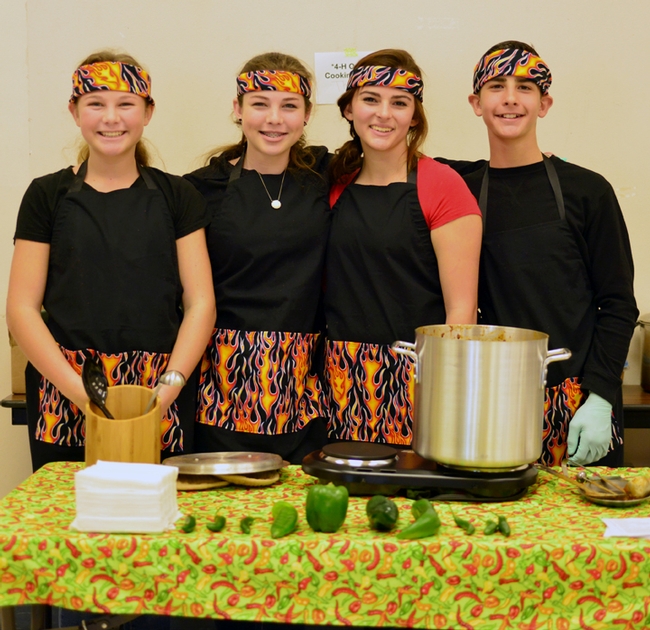
The winning chili team at the 2015 Solano County 4-H Chili Cookoff is this group of Dixon Ridge 4-H Club members who are enrolled in the countywide Outdoor Cooking Project. From left are Quincy Decious, Fallon Decious, Shayley Gish and Braydon Gish. (Photo by Kathy Keatley Garvey)
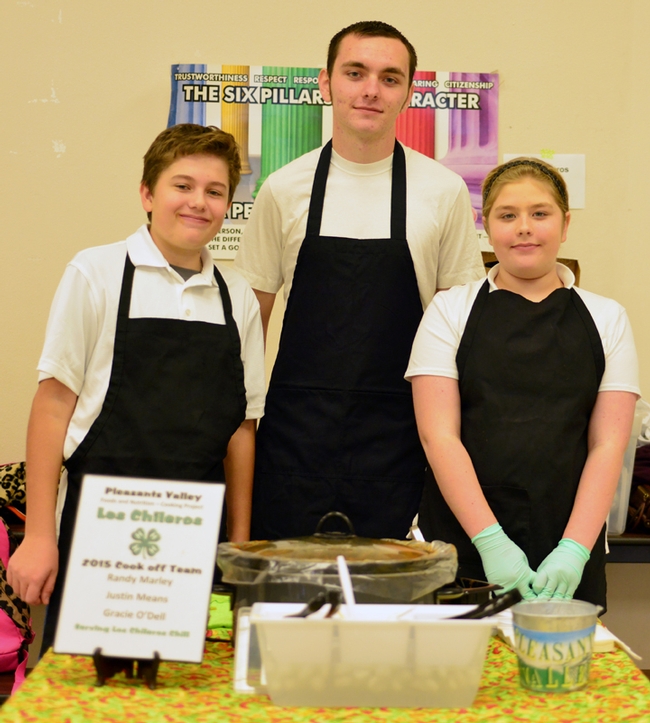
The Los Chilerios team from Pleasants Valley 4-H Club, Vacaville, made a very good chili at the Solano County 4-H Chili Cookoff, the judges agreed. From left are Justin Means, Randy Marley and Gracie O’Dell. (Photo by Kathy Keatley Garvey)
The best of the best: salted caramel butter bars
What does it take to win the best-of-show award for baked goods at a county fair?
Well, if you're Angelina Gonzalez, an alumnus of the Sherwood Forest 4-H Club, Vallejo, and now the Solano County's 4-H SET (Science, Engineering and Technology) Program representative, sometimes practice makes perfect, and sometimes perfect doesn't need practice.
Gonzalez's salted caramel butter bars swept all five awards in the adult baked goods section of the 2014 Solano County Fair. Judges first awarded the bars a blue ribbon, and then best-of-division, followed by the sweepstakes award and the coveted best-of-show.
"I've been entering cookies in the adult baked foods department for the past few years and have done well in the past," Gonzalez said. "I love baking and cookies are my specialty. This year, I attempted a recipe that I had never made before. It was a bit of a risk, but I wanted to try something new rather than another cookie recipe. I'm glad I did."
Its origin? Gonzalez selected the recipe on the Internet. (Shelly, the person who posted it several years ago, describes herself as "an addict of the buttercream sort.")
Gonzalez acknowledged it is not "the healthiest recipe out there (with a pound of butter and 50 caramel candies)," but the judges pronounced it absolutely delicious, the kind of bar cookie that folks would go back for seconds or thirds.
"Although I never took a 4-H food project, I am thankful to 4-H for everything that I have learned through it," Gonzalez said. "I started 4-H when I was nine years old and quickly learned that I loved it. The following years, I became an active member our Sherwood Forest 4-H Club as historian, treasurer, vice president, and president."
She enrolled in many different projects, including arts and crafts, ceramics, rabbits, dogs, dairy goats, horses, and leadership, receiving multiple awards at fairs. Among them: first place in novice and senior showmanship and various best-of-show awards and outstanding 4-H exhibitor awards.
"I would definitely say that 4-H gave me confidence and life skills for the future," said Gonzalez, who holds a master's degree in sociology from Sacramento State University. "After aging out of the program and a year off, I came back to 4-H (Sherwood Forest 4-H Club) as an arts and crafts project leader."
She just completed her seventh year as a project leader. Her work is much appreciated; she recently received the Solano County 4-H Alumni Award. "I love 4-H and look forward to where it takes me next," she said.
4-H'ers celebrate National 4-H Week every October. Youths and adult volunteers who want to sign up for the youth development program should contact their county 4-H program or the statewide office for more information.
Here's the prize-winning recipe, not only perfect for the holidays but for any occasion.Salted Caramel Butter Bars
Ingredients
For the Crust:
- 1 lb. salted butter, room temperature
- 1 cup sugar
- 1-1/2 cups powdered sugar
- 2 tablespoons vanilla (or use Princess Cake Emulsion)
- 4 cups all purpose flour
- 1 bag (14 oz.) caramel candies (about 50 individual caramels), unwrapped
- 1/3 cup milk or cream
- 1/2 teaspoon vanilla
- 1 tablespoon coarse sea salt (optional) (*see No. 7 below)
Instructions:
- Preheat oven to 325°
- In a large bowl, combine the butter and sugars. Using mixer on medium speed, beat together until creamy. Add the vanilla and beat until combined. Sift the flour into the butter mixture and beat on low speed until a smooth soft dough forms.
- Spray a 9x13 inch baking pan lightly with non-stick cooking spray. Press one-third of the dough evenly into the pan to form a bottom crust. Wrap remaining dough in plastic wrap and chill in refrigerator.
- Bake crust until firm and the edges are a pale golden brown approximately 20 minutes. Transfer pan to a wire rack and let cool about 15 minutes.
- While the bottom crust is baking and the remaining dough is chilling, make the caramel filling. Place the unwrapped caramels in a microwave-safe bowl. Add the cream. Microwave on high for 1 minute. Remove from the microwave and stir until smooth. If caramels are not completely melted, microwave on high for 30-second intervals, stirring after each interval, until smooth.
- Once the caramel is melted, add in your 1/2 teaspoon vanilla and stir until combined.
- Pour the caramel filling over the crust. If you are going to salt the caramel, sprinkle it on caramel layer now.
- Remove the remaining chilled dough from the refrigerator and crumble it evenly over the caramel.
- Return the pan to the oven and bake until the filling is bubbly and the crumbled shortbread topping is firm and lightly golden, about 25 to 30 minutes.
- Let cool before cutting into squares.
Next step? Enjoy! P.S.: There will be no leftovers.
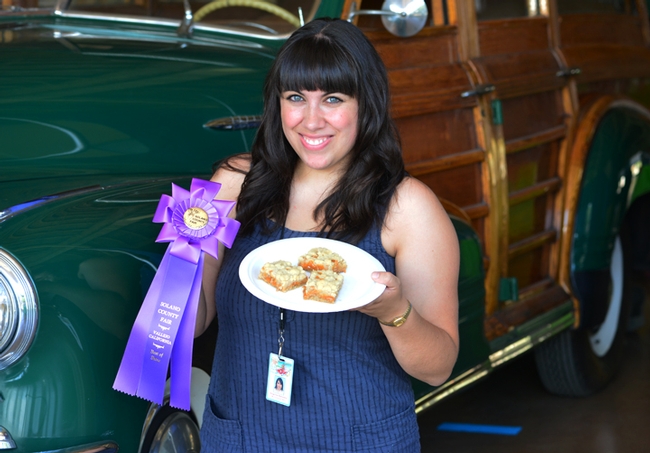
4-H enthusiast Angelina Gonzalez with her best-of-show salted caramel bars, Solano County Fair. (Photo by Kathy Keatley Garvey)


